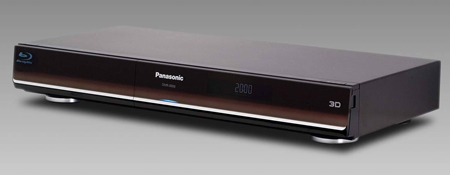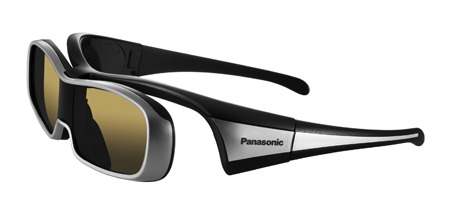Panasonic 3D Briefing


For the most part, we didn't learn anything new. Panasonic's VT25 3D plasmas include four screen sizes50" ($2600), 54" ($3000), 58" ($3400), and 65" ($4300). The two smaller models have been shipping since early MayTom as the 50-incher in for review nowand the two larger models just started shipping this month. Of course, all models display frame-sequential 3D as well as 2D content, and they all come with one pair of active-shutter glasses; additional pairs are $150 each. And all are THX certified, though that applies only to 2D operation. Panasonic is justifiably proud that the VT25 garnered the Best in Show award at CES 2010not just the best TV, but the best product, period.
The VT25 embodies several new plasma technologies under the umbrella moniker Infinite Black Pro. These include no pre-discharge, which reduces the amount of light emitted when idling and thus lowers the black level; a new louvre filter that reduces reflections for better contrast in the presence of ambient light; fast-switching phosphors, which improves motion detail; and high-speed drive circuits that also sharpen motion detail and provide smoother gradations than previous generations. All of these improvements enhance 3D operation, but they also improve 2D images as well.

Also on hand was the DMP-BDT300 3D Blu-ray player, which is available now for $429. Other than being able to play 3D Blu-rays, the most obviousand uniquefeature is its twin HDMI outputs, which can be configured to send identical A/V datastreams like an HDMI splitter. More importantly, one can send video to a 3D display while the other sends audio to an older AVR or pre/pro that doesn't offer HDMI 1.4 3D pass-through. This alone is reason enough to choose the BDT300 if you're not ready to upgrade your surround system at the same time.
But waitthere's more! A new, more powerful version of Panasonic's UniPhier chipset substantially improves the video processing in several ways. It also provides an HDMI audio-jitter reducer, and the audio circuits use high-grade components. Finally, it offers most of the online-content and networking features as the TVs.
Panasonic had set up two side-by-side demosone with a VT25 next to a Samsung C7000 240Hz LED LCD TV and the other with a VT25 beside a Samsung 3D plasma, each pair being fed the same 3D signal from a BDT300. Interestingly, the Panasonic glasses worked with the Samsungssometimesbut it certainly wasn't consistent enough to be useful.
Of particular note was the slight crosstalk visible on the LCDin a paused image from Ice Age: Dawn of the Dinosaurs, a bare twig had faint ghosts on either side, which the Panasonic rep claimed was due to the relatively slow response of the LCD pixels as they switched between the left and right images. No such crosstalk was visible on any of the plasmas, but it was a subtle difference.

I have to say that I dislike Panasonic's 3D glasses more than any others I've tried so far. They sit directly on the bridge of the nose, which I find uncomfortable, and they let a lot of light in from the sides, making a darkened room even more important.
Next, they switched to hard-disk server feeding 2D clips to all four sets. With horizontally scrolling images, the Panasonic was clearly sharper than the LCD, even though its frame interpolation was enabled, and it was also sharper than the Samsung plasma.

In one clip, a white space ship moved diagonally across a star field. The black of space was nice and deep on both the VT25 and C7000 LCD, but the Samsung's LED edge lighting dimmed the ship along with the surrounding space, which you might be able to see in the photo above. Samsung's so-called "precision dimming" tried to brighten the ship, but this resulted in a vertical band of lighter space above and below it. Also, the plasma displayed many more stars than the LCD during the clip.
Of course, I never completely trust side-by-side demos presented by any company with products from its competitors, but from what I saw, the VT25 plasma performed very well. I look forward to spending some time with the review unit Tom has to see how it does under more controlled conditions.

















































